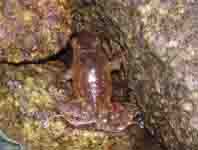Abstract
Based upon the comparison of the 649 bp COI gene sequences, Hasora mavis Evans, 1934 is proved to be the female of a sexually dimorphic species, H. leucospila leucospila (Mabille, 1891), and thus treated as a junior subjective synonym of the latter.
References
Chiba, H. (2009) A revision of the subfamily Coeliadinae (Lepidoptera: Hesperiidae). Bulletin of the Kitakyushu Museum of Natural History and Human History, Series A, 7, 1–102.
de Jong, R. & Treadaway, C.G. (1993) The Hesperiidae (Lepidoptera) of the Philippines. Zoologische Verhandelingen, 288, 1–125, figs. 1–139.
de Jong, R. & Treadaway, C.G. (2007) Hesperiidae of the Philippine Islands. Butterflies of the world, Supplement 15, 3–72.
de Jong, R. & Treadaway, C.G. (2008) Hesperiidae I. Hesperiidae of the Philippines. Butterflies of the world, part 29, 1–17, pls. 1–39.
Eliot, J.N. (1967) Revisional notes on Oriental butterflies, with special reference to Malaya (part 4). The Entomologist, 23, 146–156.
Eliot, J.N. (1992) The butterflies of the Malay Peninsula. 4th Revised Edition. Originally by Corbet, A.S. & Pendlebury, H.M. Malayan Nature Society, Kuala Lumpur, 595 pp.
Evans, W.H. (1934) Indo-Australian Hesperiidae: Descriptions of new genera, species and subspecies. The Entomologist, 67, 33–36 + 61–65 + 148–151 + 181–184 + 206–209 + 231–234.
Evans, W.H. (1949) A catalogue of the Hesperiidae from Europe, Asia & Australia in the British Museum (Natural History). The British Museum, London, 502 pp.
https://doi.org/10.5962/bhl.title.105941
Hebert, P.D.N., Penton, E.H., Burns, J.M., Janzen, D.H. & Hallwachs, W. (2004) Ten species in one: DNA barcoding reveals cryptic species in the neotropical skipper butterfly Astraptes fulgerator. Proceedings of the National Academy of Sciences of the United States of America, 101 (41), 14812–14817.
https://doi.org/10.1073/pnas.0406166101
Kimura, Y., Aoki, T., Yamaguchi, S., Uémura, Y. & Saito, T. (2011) The Butterflies of Thailand. Based on Yunosuke KIMURA Collection. Vol. 1. Hesperiidae, Papilionidae, Pieridae. Mokuyosha, Tokyo, 220 pp.
Kitamura, M. (2002) Butterflies from the southwest side slope of Mt. Banahaw, Mid-south Luzon, Philippines (7) Hesperiidae Part II, Satyridae. Butterflies, 34, 43–57.
Lee, C.H. (2012) Molecular phylogeny and systematic clarification of the genus Hasora (Lepidoptera: Hesperiidae). National Taiwan Normal University, Taipei, 45 pp.
Maruyama, K. (1991) Butterflies of Borneo. Vol. 2. No. 2. Hesperiidae. Tobishima Corporation, Tokyo, xiii + 89 pp., 48 pls.
Sugimoto, S. (2019) Notes on some hesperid butterflies of southeast Asia. Butterflies, 80, 52–54.

